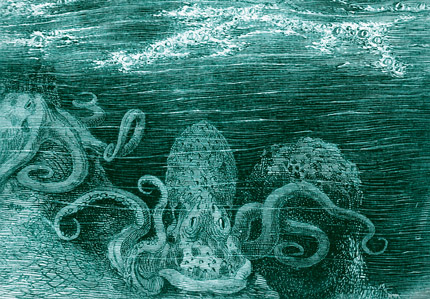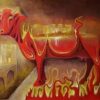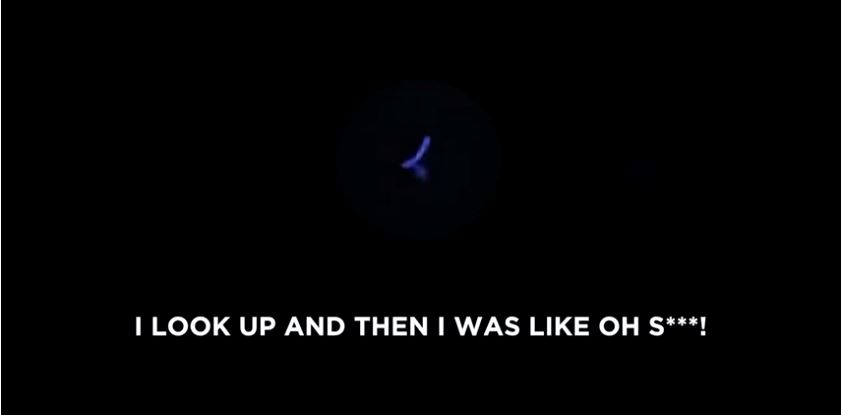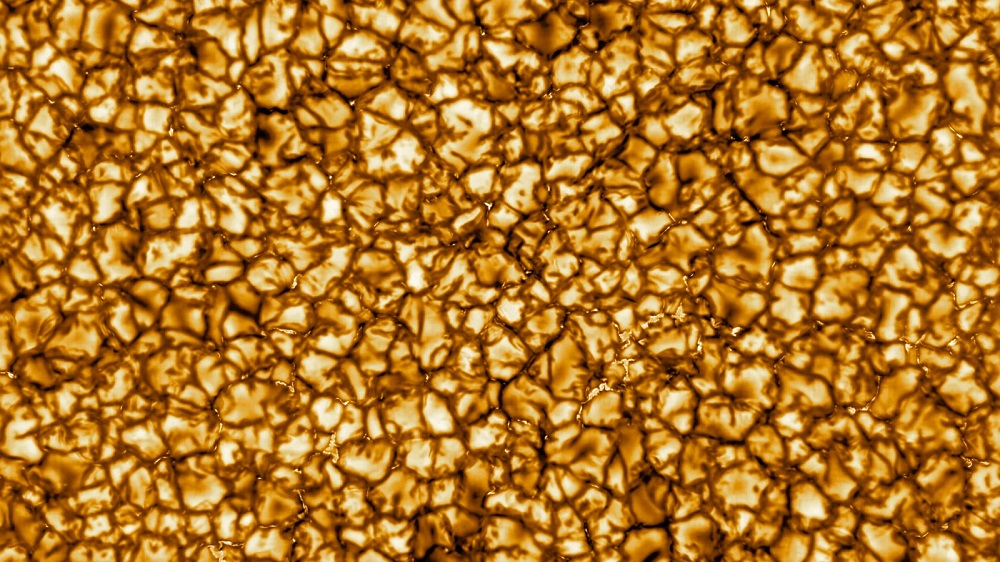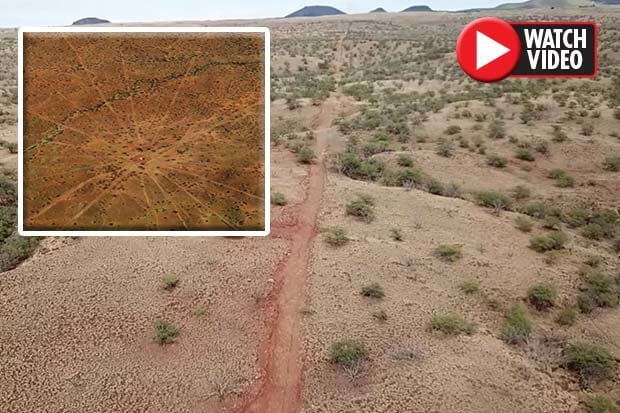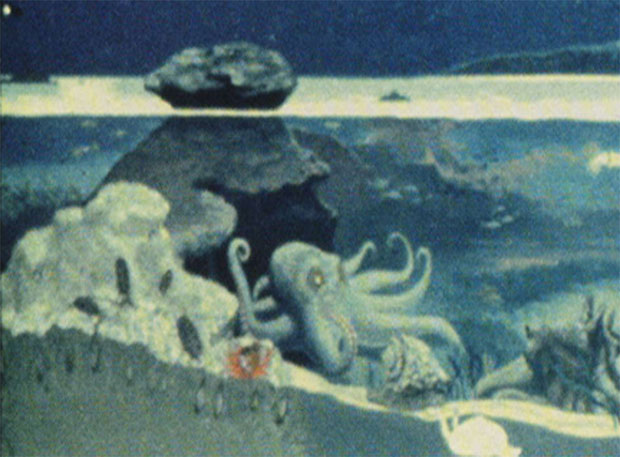by Karl P.N. Shuker
Whereas other states of the U.S.A. have attracted considerable cryptozoological attention over the years, it is a strange yet true fact that Hawaii’s mythic and mystery beasts have received far less notice. The present article reveals the hitherto little-realized variety of anomalous wildlife reported from the 50th state.
Mo’o—Giant Lizard Deities
One of the most prevalent yet mysterious creatures in traditional Hawaiian mythology is the mo’o or moho. According to legend, this ancient, monstrous animal, which is invariably associated with water, functions as a guardian spirit deity, variously protecting individuals, families, districts, and places (particularly fishponds), but it can be notoriously capricious. The mo’o resembles a huge, shinyblack dragonesque lizard measuring anything between 12 and 30 feet in its true form. It possesses the ability to shape-shift (sometimes appearing as a normal, tiny gecko, other times as a beautiful seductive woman), and communicates its wisdom to humans in dreams. It inhabits deep inland fishponds, where its presence can be confirmed if there is foam upon the water surface. Fish obtained from such a pond will taste bitter, further proof of the mo’o’s presence.

For the most part, mo’os remain hidden, spending their time ecstatically consuming the sacred but intoxicating awa root,which induces them to twist from side to side like a canoe’s keel when in water. They can be seen when the initial flames of a fire light the altars created for them near to their ponds.
The petrified head and tail of the mo’o guardian of Puna district on Hawaii are said to be visible at the bottom of two pools—one at Punalua, and the other at Kalapana, half a mile away. Moreover, a female mo’o called Mokuhinia has reputedly made a number of appearances on Maui— most notably in 1838, when she allegedly appeared to “hundreds of thousands” of people gathered at her pond. Three significant mo’os—respectively named Kilioe, Koe, and Milolii—inhabited precipices in the northern coastal region of Kauai. Another two lived in the Wailuku River close to Hilo on Hawaii, and would permit travelers to use them as footbridges to cross the river. Sometimes, however, they would tip their hapless human passengers into the river and drown them. Consequently, these treacherous monsters were eventually destroyed. According to traditional Hawaiian legend, the implacable enemy of unfriendly mo’os was Hiiaka, goddess of lightning, who slew many such monsters.
It is not clear where the Hawaiian belief in such creatures came from. There are no species of giant reptile native to these islands.
Interestingly, legends of giant lizard-like reptiles are common throughout Polynesia (especially Tahiti and New Zealand), so it is likely that the original Polynesian colonists of Hawaii brought their belief in giant reptiles with them, based perhaps upon ancestral memories of large monitor lizards or even crocodiles back in their original Indonesian homelands. According to some researchers, Tahitians definitely brought their worship of mo’o deities to Hawaii, as the royal Oropa’a family of Tahiti venerated them.
Much less probable is that Hawaii was home in distant ages past to a species of very large lizard now long extinct, whose fossil or subfossil remains have yet to be discovered.(Unless the preserved head and tail of the Puna mo’o comprise such evidence.) There are many Pacific and Indian Ocean islands that were home in the past to such creatures, and sometimes stranger ones, such as the now-demised horned turtle and land crocodile of New Caledonia. Hawaii itself was formerly populated by a diverse range of sizeable avifauna, including several species of large, flightless ducks and ibises, all now extinct, which such a reptile might have fed upon.
The Menehune
Hawaii’s most famous mythical beings are the menehune— benevolent, magical, diminutive humanoids traditionally looked upon in much the same way by Hawaiians as the fairy folk or Little People are by people in the Western world. The menehune are most commonly encountered on Kauai, but have also been reported from several other Hawaiian islands. The most detailed morphological description of them is contained within the standard work on these enigmatic entities— Katharine Luomala’s The Menehune of Polynesia and Other Mythical Little People of Oceania (1951).
In this book, the menehune are claimed to be two to three feet tall, stout and muscular with hairy, dark or dark-red skin, large eyes and long eyebrows, a protruding brow, very long hair on their heads, a short thick nose, sharp ears, a small mouth, broad shoulders, and a round stomach. Living in forest caves and emerging mainly at night, they speak via a series of deep growls or whispers but are allegedly able to communicate telepathically too, and are even believed capable of learning human languages. They feed upon fruit, vegetables, milk, and fish. Numerous ancient bridges, ponds, ditches, and other structures scattered over the Hawaiian islands are alleged to have been originally constructed by the menehune.
Hawaiian mythology alleges that modern-day Hawaiians are descended from the menehune. Renowned cryptozoological chronicler George M. Eberhart has speculated that perhaps belief in the menehune stems from some ancestral memory of the first wave of Polynesian colonists of Hawaii (A.D. 500–800) retained by the second wave of colonists (A.D. 1100–1300). Luomala, conversely, wondered whether they might be a genuine tribe of pygmies.
Nowadays, the menehune are widely treated as mythical. Yet as recently as the 1940s, over 40 schoolchildren and their schoolmaster, George London, supposedly encountered a group of these mysterious beings jumping up and down among some trees on the lawn of the
Waimea Parish property. Once they realized that they were being watched, the menehune swiftly disappeared beneath the church’s foundations. When this property was later examined, no sign of any caves or tunnels through which these mysterious mini-folk could have exited was found, thus substantiating their popular status as supernatural rather than merely elusive entities.
The menehune are not the only mysterious humanoids that have been reported from Hawaii. Larger and hairier than those were the nawao , described by Martha Beckwith in her still-classic work Hawaiian Mythology (1940) as being a race of wild people who fed upon bananas in the forest, and did not associate with modern humans. A hunting race, and formerly numerous, the nawao are believed by some to have colonized Hawaii before the menehune, but they are apparently now entirely gone. There are claims that it was the menehune who vanquished them.
Giant Octopus Ahoy!
The world’s largest recognized species of octopus is the so-called giant Pacific octopus Enteroctopus dofleini, which can weigh up to 100 pounds and exceed a radial spread (tentacle-to-tentacle) of 20 feet.
The largest recognized specimen of octopus on record belonged to a different species, Haliphron atlanticus, a badly-damaged, incomplete individual dredged up in March 2002 by a fishing trawler off New Zealand’s Chatham Islands. What made it surprising was not just its remarkable size—weighing an estimated 165 pounds when alive and with an estimated radial spread of up to 30 feet—but also its location Until then, this species had beenknown to exist in the Atlantic Ocean. This specimen indicated that there could be other, extra-large individuals of its species lurking unseen beneath the Pacific Ocean’s surface.
Indeed, even the Chatham Islands specimen was positively diminutive in comparison with various Pacific mega-octopuses that have been reported off Hawaii. In 1928, no less than six massive octopuses, each with an estimated radial spread close to 40 feet, were reputedly spied together off the coast of Oahu by Robert Todd Aiken, while stationed at Pearl Harbor with the U.S. Navy. Eight years later, he returned to the same spot with a film crew headed by director Robert Hale, and on the front page of the July 27, 1936, issue of the Honolulu Advertiser a photo appeared claiming to be of Aiken standing next to one of the six mega-octopuses, whose span was given in the photo’s caption as 40 feet. Nothing more has emerged concerning this incredible find, which seems odd, unless it was merely a fake specimen used as a demonstration of how big the real ones would look.
One of these giant beasts may have reappeared one Sunday morning in 1950 when diver Madison Rigdon observed a huge grayish-brown octopus “the size of a car” being attacked by several sharks about 200 yards off Oahu’s Lahilahi Peninsula, in an area of water roughly 30 feet deep. Rigdon estimated the length of the octopus’s tentacles at 30 feet, and claimed that each sucker was the size of a dinner plate. After warding off the sharks, the octopus abruptly released a vast quantity of black ink and sank out of harm’s way.
Even bigger was the monstrous octopus sighted that same year resting approximately 30 feet underwater upon a reef off Hawaii’s Kona Coast by fisherman Val Ako when he went diving for turtles. He claimed that its tentacles were 75 feet long, with suckers the size of car tires. After surfacing, Ako dived back down to the reef half an hour later, and the octopus was still there, watching him but not moving. He was later informed by an old family advisor that this enormous creature visited the reef for a month each year, accompanied by another octopus, and had been seen many times.
Interestingly, both of the 1950 sightings took place offshore from localities that have been used by sea turtles as nesting grounds. Perhaps these giant octopuses were lying in wait to catch newly-hatched turtles entering the water, or even hoping to snare one of the big adult turtles as they swam shoreward to lay their eggs.
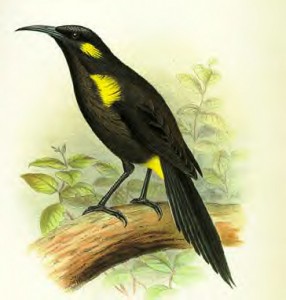
Two Mystery Birds
The Hawaiian islands are home to a remarkable family of small, brightly-colored finch-like birds found nowhere else in the world. Known collectively as the drepanidids or Hawaiian honeycreepers, their 30-odd species sport such delightful native names as the iiwi, amakihi, anianiau, palila, ula-ai-hawane, and akiapolaau .Tragically many of these attractive little birds are now either extinct or gravely endangered due to a lethal combination of avian diseases brought to the islands by non-native birds, habitat destruction, predation by non-native creatures such as rats, and slaughter for their pretty feathers to be used in tribal decorations.
As a result, some honeycreepers are little-known, represented by only a few specimens and scant native information— but none more so than the Lanai hookbill. This enigmatic species is known from just a single specimen and a few sightings.
On February 22, 1913, ornithologist George C.Munro spied an unfamiliar honeycreeper in the Kaiholena Valley on Lanai. The trusting little bird, predominantly yellow in color but with black wings, legs, nape, and top of head, plus a notably hooked beak, chirped and flew to a spot near to him. As this was still a time when collecting specimens for museums and private collections interested scientists far more than conserving them alive in their natural habitat, Munro promptly shot it. After examining its corpse he realized that this bird did not correspond with any other honeycreeper species on record.
When formally described, it was indeed declared to represent a new species, which was duly named Dysmorodrepanis munroi after Munro, who later claimed to have had two further sightings of birds fitting his shot specimen’s description. However, no additional example has ever been obtained; nor have any other sightings been reported. For a long time the Lanai hookbill was dismissed as nothing more than a freak or a hybrid. In recent years, however, reassessments of its unique specimen (preserved at the Bernice P. Bishop Museum in Honolulu) have suggested that it may well have been a valid species after all, as its beak and tongue in particular were very distinctive.
Larger than the honeycreepers but equally striking was another group of birds native exclusively to the Hawaiian islands. Belonging to the meliphagid or honeyeater family, these spectacular species were known collectively as o-os (named after their “o-o” cry), and were characterized by their silky black plumage highlighted with primrose-yellow epaulettes and flashes of white beneath their long slender tails. Except for Maui, each major island was once home to its own unique species of o-o, but just as with the honeycreepers, one by one the o-os became extinct, killed for their gorgeous plumes and persecuted by rats. By the 1960s, only a single species survived, the dwarf o-o or o-o-aa Moho braccatus of Kauai, and today this may have died out too, because there has been no confirmed sighting since the late 1980s.
In 1981 an o-o was clearly observed twice on the supposedly o-o-lacking island of Maui by an experienced American ornithologist. This highly unexpected specimen has been classed as a representative of Bishop’s o-o Moho bishopi, previously believed to be confined entirely to Molokai, where it has been deemed extinct since 1904.Whether Maui’s mystery o-o still exists, however, is another matter, as no post-1981 sighting of it has been recorded.
Unexpected Interlopers
In recent years, some unusual and definitely non-Hawaiian animals have been reported from the 50th state, but surely none more so than the following trio of decidedly unexpected, mystifying interlopers.
Unconfirmed sightings of a mystery big cat had been circulating on Maui since the late 1980s. Between December 2002 and June 14, 2003, no less than eight separate reports of a dark-brown, long-tailed, feline beast resembling a puma, weighing an estimated 100 pounds, and stalking the lower Olinda district of Maui,were filed by the island’s Invasive Species Committee. After a clump of fur matching the description was found at the scene of a June 9, 2003, sighting, two large, meat-baited box traps were set, but nothing was caught. However, a search of the area later found large claw-marks on trees as well as some chewed bird remains and four-inch paw-prints. More traps, this time baited with chicken, were set, and one was destroyed, but no cat was caught.
After a pet 30-pound fawn was found mauled to death in mid-July, big cat expert Bill Van Pelt was called in from Arizona’s Game and Fish Department, but despite employing recorded wild cat calls, infra-red cameras, and even simulated prey calls to lure the cat into view, it remained resolutely elusive. Yet again, hefty claw-marks were discovered on a tree, which convinced Van Pelt that a large cat was indeed in the area. And two more paw-prints were found following an alleged puma sighting on August 25. Five other sightings and the mauling of a pet dog in October led to the arrival on Maui of more big cat experts, who collected hair samples for DNA analyses, but these proved inconclusive.
The Maui mystery cat case remains unsolved. The most likely explanation is that a large cat was brought illegally into Hawaii and then escaped or was released and permitted to roam at will.
This explanation definitely answers the mystery of how a mature female South American piranha came to be caught on February 23, 1993, in Oahu’s Wahiawa Reservoir. Reports of such fishes had first been reported here at least eight months earlier, but remained unconfirmed until this specimen was finally procured.
As for the chupacabras: this bizarre mystery beast is traditionally associated with Hispanic localities, most notably Puerto Rico,Mexico, and South America. On February 16, 2007, a grotesque beast described as half-dog, half-human and likened in media reports to the fabled chupacabras was spied just outside the Kuia Leia airport on Maui. Several canine chupacabras specimens discovered in the mainland United States have proven to be dogs or coyotes with mange, but whether such an explanation could be satisfactorily applied to a creature said to be half-human is another matter.
As can be seen from the selection of examples documented here, Hawaii is greatly deserving of future attention from enterprising cryptozoological investigators keen to seek out some of our planet’s lesser-known cryptids, and also from zoomythologists interested in uncovering more concerning the 50th state’s fascinating legends and lore.
An internationally recognized expert in cryptozoology, Karl P. N. Shuker holds a Ph.D. in zoology and comparative physiology. He lives in England, where he is a freelance zoological consultant, lecturer, and writer.
